Past exhibition 1982
Into the Archive - Setting the Agenda: From Art and Industry to Fear and Love
Let's look back at where it all began – Art and Industry, held in 1982 at the Boilerhouse Project.
Welcome to the second post of Into the Archive, our weekly survey of interesting moments in the Design Museum’s history. It seems only right that we should look back at where it all began – Art and Industry, held in 1982 at the Boilerhouse Project.
The Design Museum’s home at Shad Thames was well-known to millions of visitors, and its current home in Kensington is a popular landmark. But its first incarnation may be less familiar; between 1981 and 1986 it existed as the Boilerhouse Project, an independent ‘museum within a museum’ at the V&A, on the site that is now the new Exhibition Road entrance.

The Boilerhouse Project logo, 1982

Director Stephen Bayley, underneath the neon sign at the Boilerhouse Project’s entrance
The Boilerhouse Project was the first initiative to be funded by the Conran Foundation, an educational charity set up by Sir Terence Conran with the aim of raising the level of discussion about contemporary design. Its aim was to open a dedicated museum of industrial design, to be funded by the stock market floatation of Conran’s company, Habitat. In the late 1970s, Conran appointed academic Stephen Bayley to run the Boilerhouse Project as a testing ground for what this new museum could be.
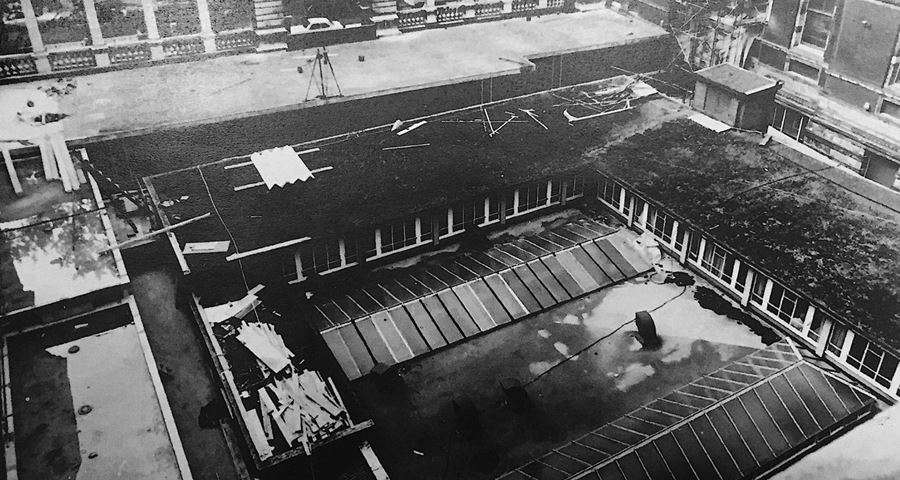
The boiler house yard in the V&A’s grounds. Exhibition Road is just beyond the Aston Webb screen at the back of the photograph
Following an invitation by the V&A’s director, Sir Roy Strong, the Project set up its first temporary home in the V&A’s disused boiler house (hence the name). Designed by Conran Associates, the walls and floors, columns and ceiling tiles were painted completely white, and the effect was so clinical that Bayley’s office was reputedly used as a stand-in as a laboratory for a television advertisement for aspirin. If you know more about this story, then please do get in touch – we’d love to find out more!
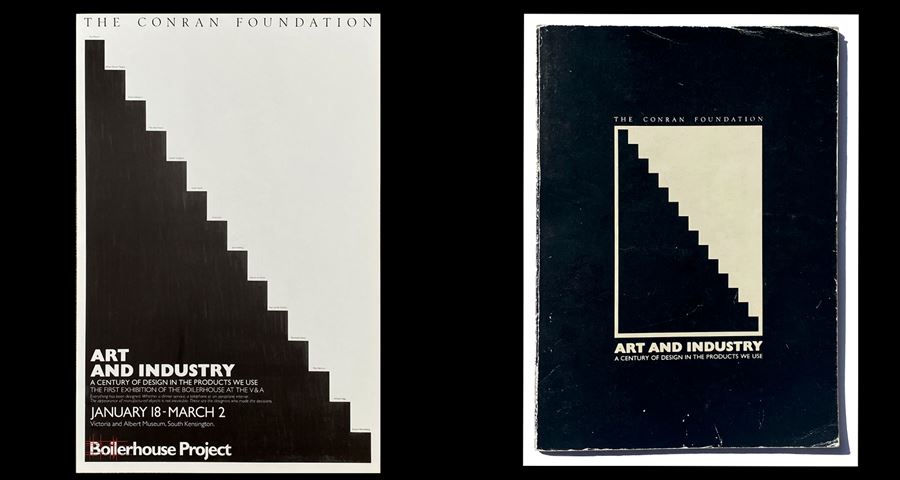
(L) The Art and Industry poster, 1982, (R)The accompanying catalogue for Art and Industry
For the first exhibition, Bayley and Conran decided to stage a show that would be ‘as deliberately retrospective as its main activities will in future be prospective’. Art and Industry set out to explore the influence of professional designers on the manufacturing industries, and in doing so, the aim was to make the case for the serious study of industrial design. The poster and catalogue, designed by Flo Bayley, made use of a striking graphic that appeared to hint at a tension between creative imagination and manufacturing industry; a duality that was nonetheless sustained by complementary working relationships.
The show bought to public attention designers that, before then, were known only in academic circles. It told the story of how Peter Behrens made a name for himself as the consultant designer for German electrical company, AEG, by designing everything from its products and buildings, the company logo and its advertisements.
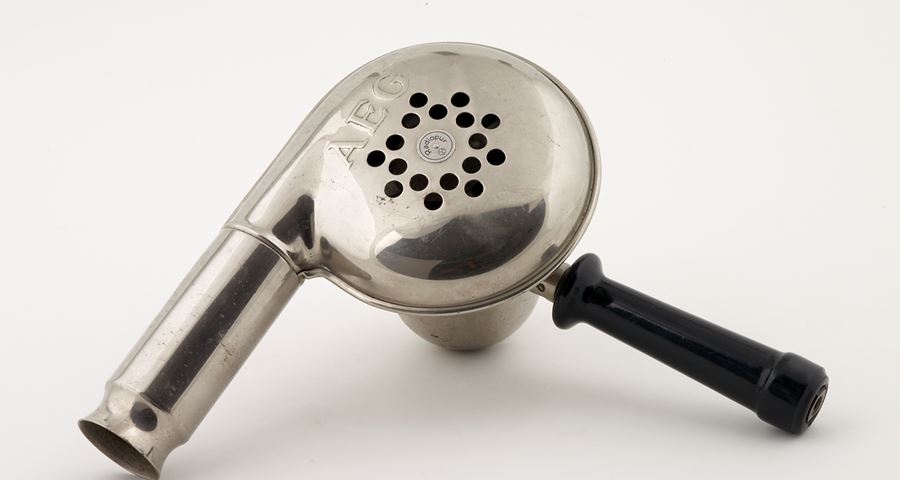
Radiopur hairdryer, designed by Peter Behrens for AEG, c.1920]
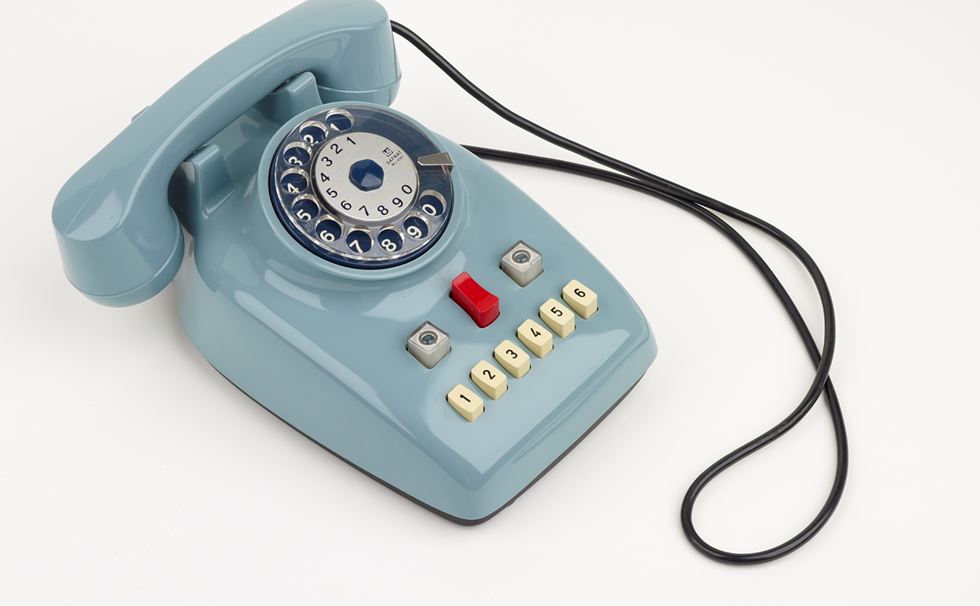
2+7 Telephone, designed by Marcello Nizzoli for Safnat Milano, 1958
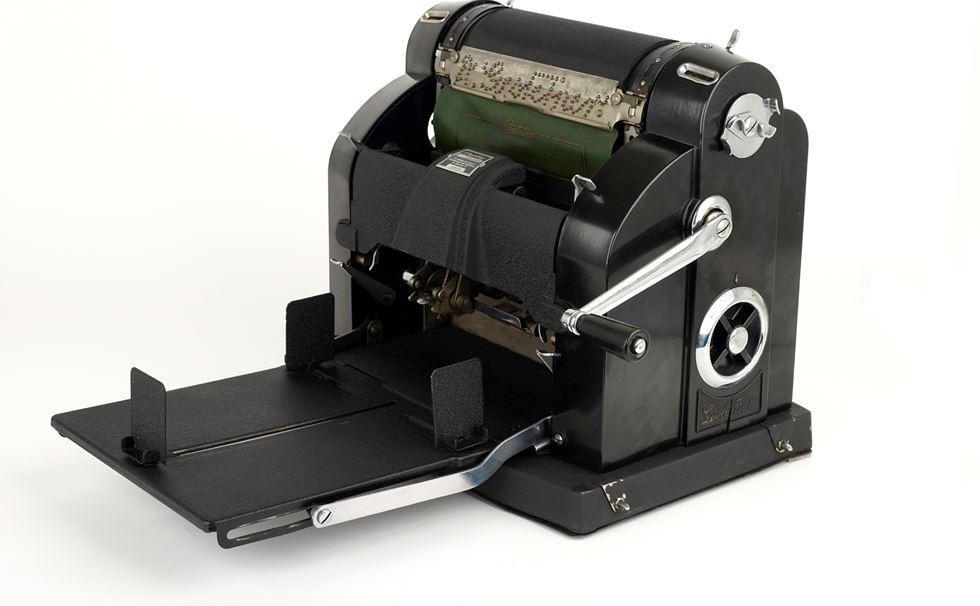
Raymond Loewy’s Model 66 duplicator for Gestestner, designed in 1933
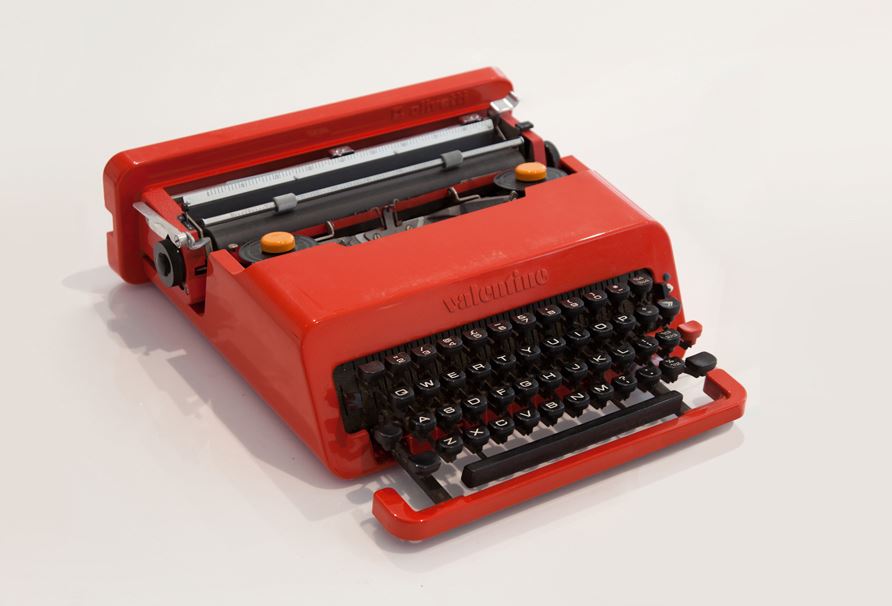
Valentine typewriter, designed by Ettore Sottsass and Perry A. King for Olivetti, 1969

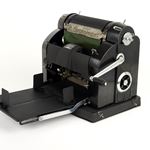
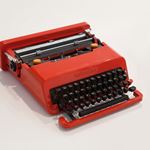
It showcased the work of Italian designers such as Marcello Nizzoli and Ettore Sottsass, and the way in which they created work for Italian companies such as Olivetti, while still managing to retain a considerable degree of creative independence and integrity.
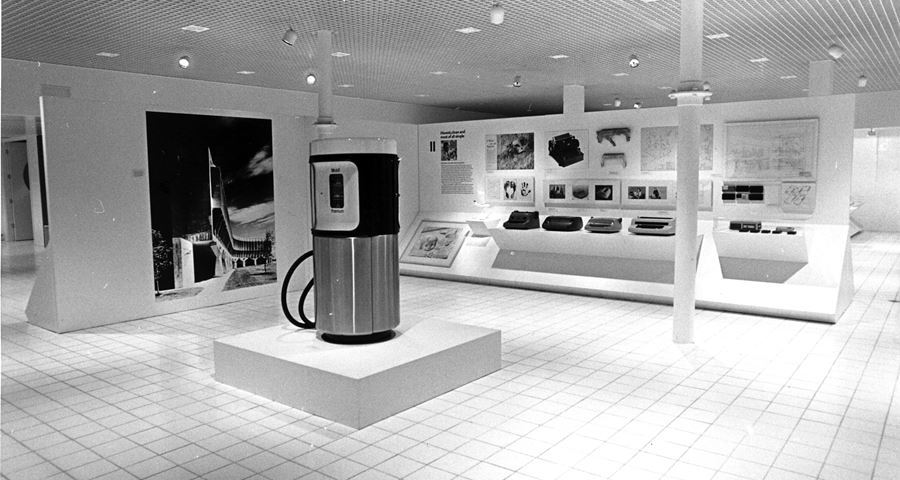
Perhaps the most surprising sight was that of a petrol pump for the Mobil Oil Corporation, placed in a prominent position in the middle of the gallery. It was shown as part of a case study into designer Eliot Noyes’ work in developing a corporate identity for the newly-established Mobil Oil, much of which is still in use today.
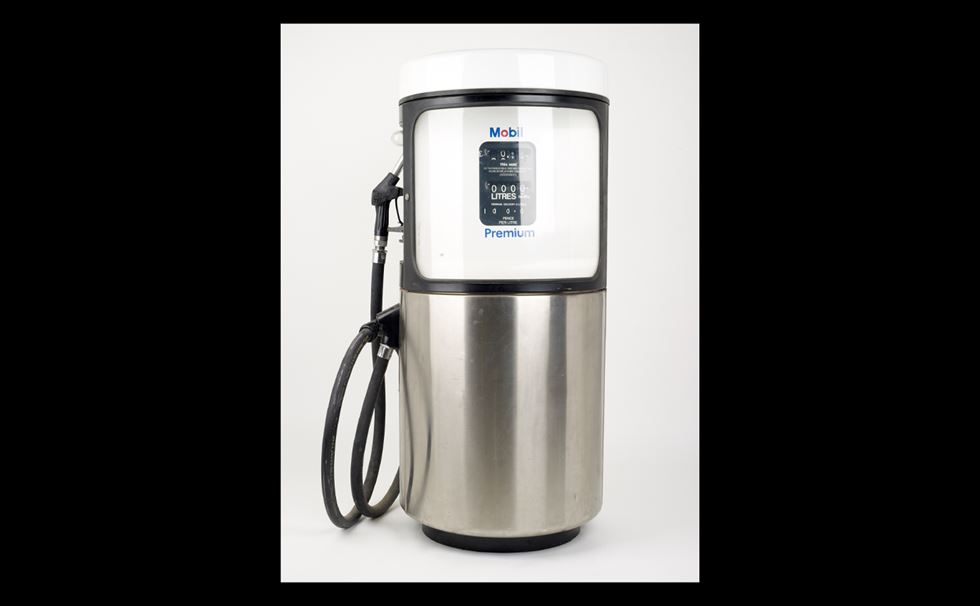
Mobil Oil petrol pump, designed by Eliot Noyes, 1968

The Pegasus sign, a Mobil trademark since the 1930s
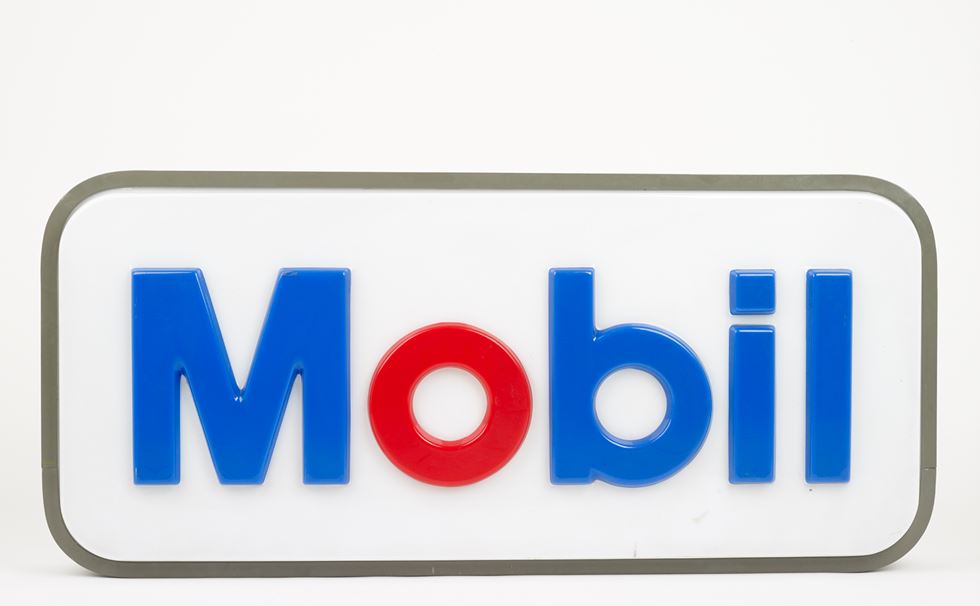
Sign bearing the Mobil logo designed by New York design firm Chermayeff and Geismar in 1963
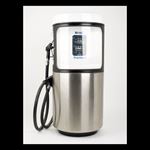
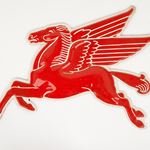

When the show opened on 2 January 1982, newspaper commentators expressed shock at seeing a petrol pump displayed on a white plinth. The Guardian struggled to understand why a museum would display everyday consumer goods, believing that this was ‘calculated to distance the public’. The Observer reacted with bewilderment, saying that ‘the work of the industrial designer would be sinister were it not also mildly ridiculous’. Its conclusion was that the Boilerhouse Project was ‘a strange nether-region where the homage paid to goods and gods is wreathed around with dubious assumptions’.
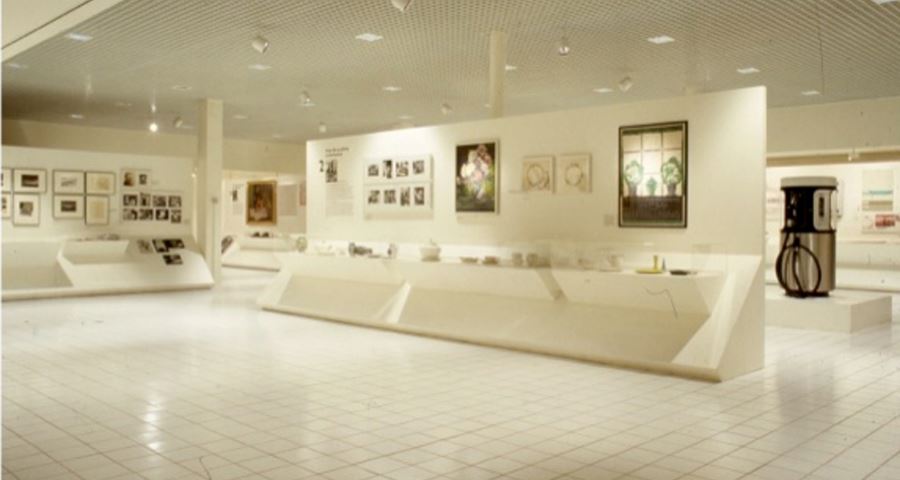
Another view of Art and Industry
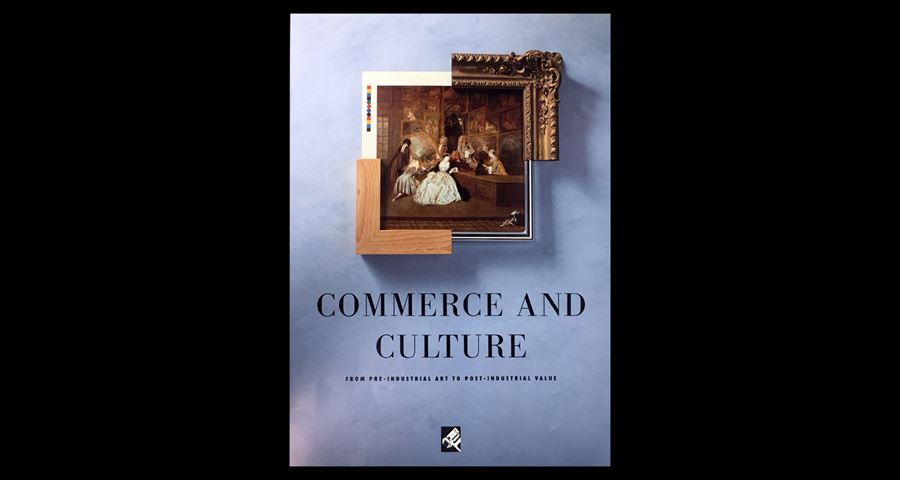
The accompanying catalogue for Commerce and Culture, 1989
Despite these criticisms, Art and Industry resonated with the public. Over the following five years, the Boilerhouse Project hosted a fast-paced and rapid-fire series of 23 exhibitions, which received over 1,000 visitors a day and generated over 14,000 column inches. It had proved, conclusively, that there was a public appetite for design. Following the end of its lease, the Boilerhouse Project moved to Shad Thames and became the Design Museum.
Art and Industry is significant not only because it set the agenda for the Boilerhouse Project, but also because made a strong argument for taking the study of industrial design seriously. This argument has now been accepted, and no-one considers it strange to see consumer products in a museum today. Even fewer would consider describing the industrial design profession as ‘sinister’ or ‘ridiculous’.
Since then, every time the Design Museum has moved to a new building, it has done so by holding another agenda-setting exercise. When the museum moved to Shad Thames, it opened with Commerce and Culture in 1989, a show that argued that the distinctions between the commercial world and cultural institutions were increasingly blurred.
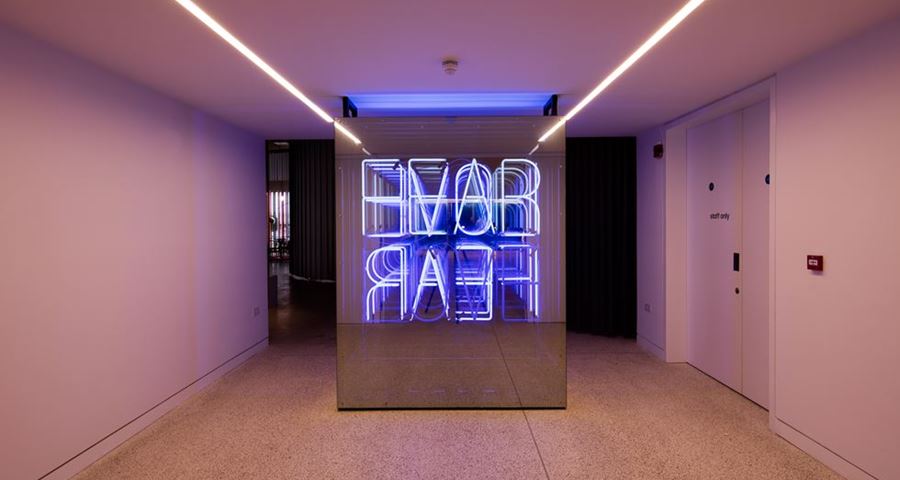
The neon sign at the entrance to Fear and Love, designed by Sam Jacob Studio in 2016
And when the Design Museum moved to Kensington in 2016, it staged another agenda-setting exhibition: Fear and Love. In the same way that Art and Industry made a case for taking industrial design seriously, Fear and Love made the argument that design had a new role to play in asking important questions about the issues that really matter. 11 designers were invited to explore a range of diverse issues, including networked sexuality, sentient robots, slow fashion and nomadism.
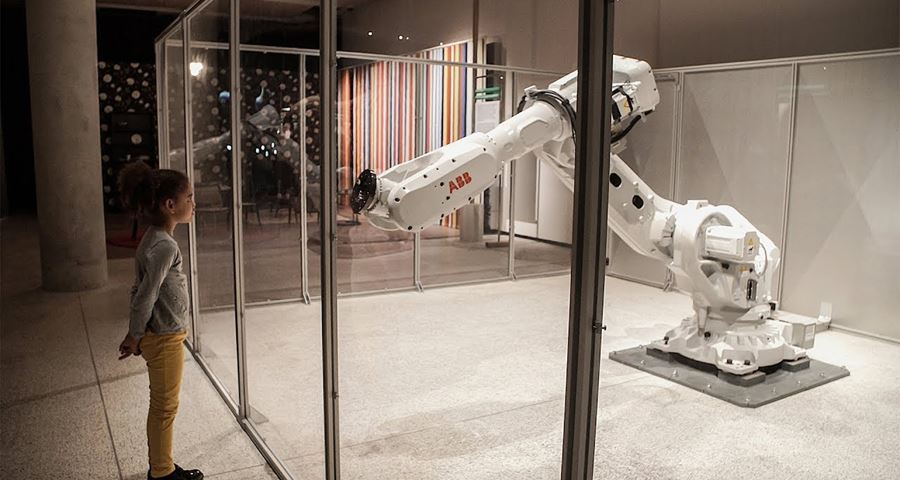
Madeline Gannon’s Mimus – a robot that responded to the presence of people, 2016
All three shows are completely different in character and message, and the Boilerhouse Project now feels a lifetime away from today’s Design Museum. However, they all share a common realisation that design is a way of understanding the changing world around us. They also remind us that design is a constantly-evolving subject, without a static definition. It’s almost inevitable that the Design Museum will hold another agenda-setting exhibition in the future. When that happens, it’ll be fascinating to know what argument it makes.
into the archive
Background image| The Art and Industry poster, 1982